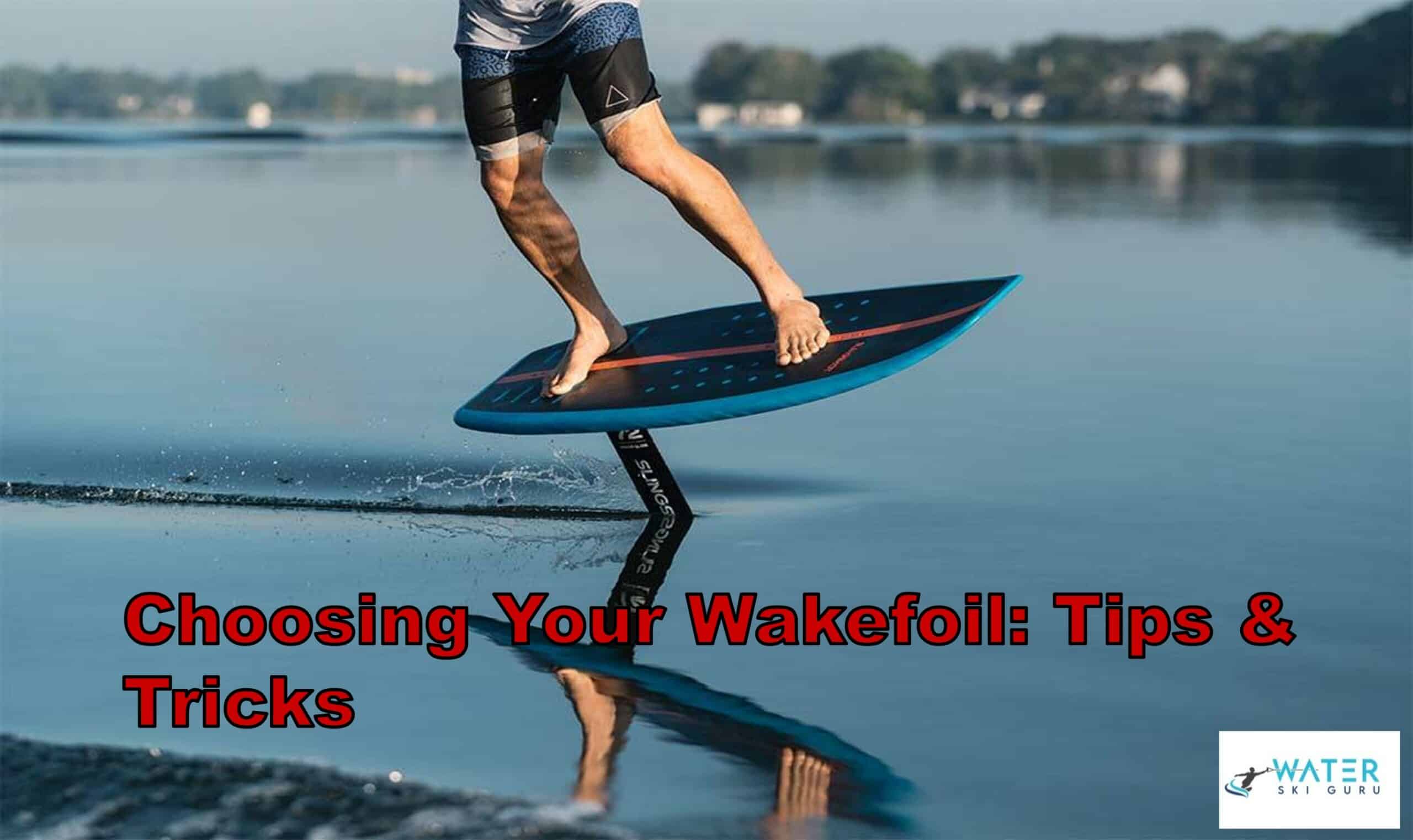Are you ready to take your wakeboarding to the next level? Wakefoiling is an exhilarating water sport that combines the thrill of wakeboarding with the freedom of flying. However, choosing the right wakefoil board can be a daunting task, especially for beginners. With so many options available in terms of shapes, sizes, and styles, it can be difficult to know where to start.
Fortunately, we’re here to help. In this article, we’ll provide you with tips and tricks for choosing the perfect wakefoil board that suits your skill level and water conditions. From the shape of the board to the length of the mast and the size of the front wing, we’ll cover all the important factors you need to consider when selecting a wakefoil.
Whether you’re a seasoned pro or just starting out, this guide will help you make an informed decision and take your wakefoiling to new heights. So, let’s dive in and explore the exciting world of wakefoiling!
Wakefoil Board Shapes
When choosing a wakefoil, you should consider the different shapes and sizes of wakefoil boards available. Larger boards are more beginner-friendly and offer more buoyancy in the water, making it easier for you to stand on the board and control your ride. A larger board also provides more stability, which is important when learning how to balance on the foil.
Check out this video that introduces the WakeFOIL.
As you gain experience and confidence, you can switch to a smaller board to improve your maneuverability and increase your speed. Wakefoil boards also come with the option to add foot straps. Foot straps can be a useful tool for lightweight riders who are just starting to learn how to foil.
They help you learn to foil and remain in the correct position on the board, making it easier for you to control your ride. Foot straps also help riders learn how to pump the foil and gain speed in the water, which is essential for more advanced maneuvers. However, it’s important to note that foot straps are not necessary for wakefoiling, and many experienced riders prefer to ride without them.
Foil Mast Length and Type
To get started with wakefoiling, it’s important to consider the length and type of foil mast that will best suit your level of expertise and the water conditions you’ll be riding in.
Mast length selection is crucial in determining the height at which the foil will ride in the water. Shorter mast lengths are ideal for beginners as they provide more stability and control. They also allow the rider to stay closer to the water, making it easier to recover in case of a fall.
Different mast types also affect the performance of the foil board. Generally, aluminum masts are less expensive but heavier, while carbon masts are lighter but more expensive. When choosing a mast, it’s important to consider the weight of the rider, as well as the size and shape of the board and foil.
A longer mast will allow for higher speeds and bigger waves, while a shorter mast is better for learning and slower speeds. Ultimately, the choice of mast will depend on your personal preference and skill level.
Front Wing Size and Type
As you explore wakefoiling, consider the front wing size and type, which can significantly impact your riding experience. Choosing the right front wing, like a key to a lock, can unlock your potential on the water.
The front wing is responsible for generating lift and controlling the stability of the foil. Here are some tips to help you choose the right front wing size and type:
- Consider the size and shape of the front wing. A smaller front wing is easier to learn on and more agile, making it a great choice for beginners. A larger front wing creates more lift for smaller waves, but can be more difficult to maneuver.
- Think about your riding goals. Are you looking to do tricks, or just cruise around? A smaller front wing may be better for tricks, while a larger front wing may be more suitable for cruising.
- Take into account your weight and skill level. A smaller rider or beginner may benefit from a smaller front wing, while a more experienced rider or heavier individual may need a larger front wing.
- Consider purchasing multiple front wings. As your skills progress, you may want to upgrade to a larger front wing for bigger waves or more advanced maneuvers.
Choosing the right front wing size and type is crucial to your wakefoiling experience. A smaller front wing is beneficial for beginners, as it provides more control and maneuverability. Keep in mind your riding goals, weight, and skill level when selecting a front wing, and consider purchasing multiple wings as you progress.
With the right front wing, you can unlock your potential on the water and take your wakefoiling to the next level.
Frequently Asked Questions
Do wakefoil boards come with fins or do they need to be purchased separately?
Fins or no fins: wakefoil board options, pros and cons. Wakefoil boards come with or without fins, but it’s recommended to buy them separately to customize your ride. Adding and adjusting fins can improve stability and control.
Can wakefoiling be done in saltwater or is it only suitable for freshwater?
Picture yourself slicing through the salty waves on your wakefoil. Saltwater wakefoiling offers new challenges and sensations, but also drawbacks like corrosion. Freshwater wakefoiling is less harsh on equipment, but lacks the ocean’s dynamic power. Build mastery in either element.
How do you know if a wakefoil board is the right size for you?
To choose the right size wakefoil board, consider your skill level and water conditions. Larger boards are beginner-friendly while smaller boards are more maneuverable. Foot straps can aid in learning. Tips for selecting the best wakefoil for your needs include considering the mast length and front wing size.
Is it necessary to have prior experience with other water sports, such as surfing or wakeboarding, before trying wakefoiling?
Prior experience with other water sports, such as surfing or wakeboarding, can be helpful but not necessary for wakefoiling. The learning curve can be steep, but with proper instruction and beginner-friendly equipment, anyone can learn to foil and master this exhilarating sport.
Are there any specific safety precautions that should be taken when wakefoiling, such as wearing a life jacket or using a spotter on the boat?
Your safety is important when wakefoiling. Always wear a life jacket and have a spotter on the boat. Beginner tips include starting with a shorter mast and avoiding common mistakes like leaning back or looking down.
Conclusion
Congratulations! You’re now equipped with the knowledge and experience to choose the perfect wakefoil board that suits your skill level and water conditions. Remember, the shape of the board can affect the performance of your wakefoil, so choose wisely based on your preference and skill level.
Additionally, did you know that wakefoiling has been gaining popularity in recent years? A 2018 report estimated that the global wakeboarding equipment market is expected to grow by a CAGR of 12.47% from 2018 to 2022. This statistic shows that wakefoiling is not just a passing trend, but rather a growing water sport that is here to stay.
As more people discover the thrill of wakefoiling, it’s important to choose the right equipment and practice safe techniques to ensure a fun and enjoyable experience on the water.
So go ahead, take the plunge, and enjoy the exciting world of wakefoiling with the perfect board that suits your needs. Remember to always prioritize safety and have fun!

